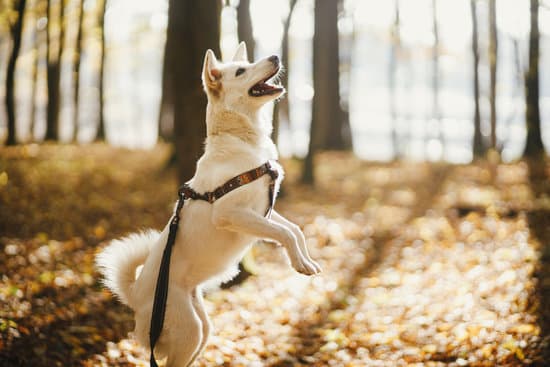Training your dog to heel is a crucial part of their obedience and discipline. Not only does it establish a strong bond between you and your furry friend, but it also brings about numerous benefits. In this article, we will explore why training your dog to heel is essential, the advantages it provides, and what you can expect from the training process.
First and foremost, teaching your dog to heel ensures their safety and the safety of others around them. When a dog understands how to heel properly, they are less likely to dart off or pull on the leash during walks. This level of control allows you to navigate busy streets or crowded areas with confidence, knowing that your dog will stay by your side.
Additionally, proper heeling instills good manners in your dog. It prevents them from jumping on people or rushing towards other animals while out on walks. By integrating heeling into their daily routine, you are fostering respect and obedience within your pet.
Before embarking on the heeling training journey, it’s important to set realistic expectations. While each dog learns at their own pace, consistency and patience are key factors in successful training. With dedication and the right approach, you can achieve a harmonious walking experience with your beloved canine companion.
Understanding the concept of heeling
Defining what it means for a dog to heel
Heeling is a specific command in dog training that requires the dog to walk closely beside their handler on a loose leash. When a dog is heeling, they are not pulling ahead or lagging behind, but rather maintaining a consistent and controlled pace next to their owner’s side. This command is especially important for situations that require precise control, such as walking in crowded areas or navigating through obstacles.
How heeling differs from regular walking or loose leash walking
While loose leash walking generally refers to allowing some freedom for the dog to explore within the boundaries of the leash, heeling takes it a step further by requiring the dog to be in constant proximity to their handler. It involves teaching the dog to pay attention to their owner’s movements and maintain a specific position relative to them. Heeling commands often include verbal cues along with hand signals that guide the dog’s behavior throughout the walk.
The mindset and role of the dog owner in heeling training
A crucial aspect of heeling training is understanding and embracing your role as the leader and teacher for your canine companion. Dogs are naturally inclined towards following leaders, so it is essential for you to adopt a confident and assertive mindset when training them to heel. Clear communication, consistency in expectations, and positive reinforcement techniques will help establish you as an authority figure in your dog’s eyes.
| Command | Description |
|---|---|
| Sit | A command that instructs the dog to sit down on all four legs. |
| Stay | A command that tells the dog to remain in place until given further instruction. |
| Come | A command that calls the dog to return to their owner. |
By reinforcing basic obedience commands such as sit, stay, and come, you are establishing a foundation of trust and respect between you and your dog. These foundational commands will lay the groundwork for teaching your dog how to heel effectively.
Training your dog to follow your lead and respond promptly to your cues will pave the way for successful heeling training. Remember, patience and consistency are key when teaching these basic commands, as they build the essential skills needed for heeling.
Preparing for heeling training
Before diving into the process of teaching your dog to heel, it’s important to take the time to prepare yourself and your dog for successful training sessions. This section will guide you through the necessary steps to set yourself up for success.
The first step in preparing for heeling training is gathering the necessary training equipment. A sturdy leash and a properly fitting collar or harness are essential for effective communication and control during the training process. Consider using a flat collar or a front-clip harness to discourage pulling and promote better leash manners.
Creating a calm and distraction-free environment is also crucial when preparing for heeling training. Start by finding a quiet space, such as your backyard or a peaceful park, where you can begin the training process without too many distractions. Additionally, remove any potential sources of excitement or temptation from your surroundings, such as toys or other animals.
Lastly, establishing a positive and respectful relationship with your dog prior to training is key. Dogs thrive on trust and clear communication, so taking the time to build this foundation will greatly contribute to their receptiveness during heeling training. Engage in bonding activities, spend quality time together, and incorporate obedience exercises into your daily routines.
Remember, setting aside proper time for preparation will significantly increase your chances of success when it comes to heeling training. By having the right equipment, creating an ideal environment for learning, and fostering a strong relationship with your dog beforehand, you’ll be well-prepared for the journey ahead.
Basic commands and foundation training
To begin, spend dedicated time practicing these basic commands with your dog in a calm and controlled environment. Use positive reinforcement techniques such as treats or verbal praise to reward them when they correctly follow each command. Consistency is key during this foundational training stage, so be sure to repeat the commands regularly and reinforce the behavior consistently.
In addition to basic obedience commands, it is important to teach your dog the notion of following your lead. This can be achieved by using simple exercises that require them to pay attention to you and respond accordingly. For example, practice walking with your dog on a loose leash while changing directions frequently. When they follow your lead and adjust their pace accordingly, reward them with praise or treats.
Building a strong foundation of trust and communication through basic commands and exercises not only prepares your dog for heeling training but also fosters a positive relationship between you both. It establishes you as the leader and helps your dog understand that they should look to you for guidance during walks.
| Command | Description | Hand Signal |
|---|---|---|
| Sit | Instructs the dog to sit down on its hind legs. | Raise hand palm-upward above their head. |
| Stay | Directs the dog to remain in their current position until given further instruction. | Extend arm out parallel to the ground, palm facing forward. |
| Come | Calls the dog to return and approach the owner. | Extend arm towards the dog, with a hand gesture as though beckoning them over. |
By laying this groundwork and establishing a strong foundation of basic commands and communication, you will set your dog up for success in heeling training. Remember to be patient and consistent during this stage, as it takes time for your dog to understand and internalize these commands. With practice and positive reinforcement, you will be well on your way to achieving a well-behaved, heeling dog.
Teaching the heel command
To begin teaching the heel command, start in a quiet and familiar environment with minimal distractions. Make sure you have some treats or rewards handy to reinforce your dog’s compliance. Begin by standing beside your dog and holding a treat at their nose level, close to your body. Give the command “heel” in a calm and assertive voice, and take a step forward while luring your dog with the treat.
As soon as your dog takes a step forward alongside you, reward them with praise and the treat. This positive reinforcement helps reinforce that heeling behavior is desirable. Repeat this process several times in short increments, gradually increasing the number of steps before rewarding your dog.
You can also introduce a hand signal along with the verbal command to enhance communication with your dog. For example, you might hold up your left pointer finger pointed downwards as you give the “heel” command. Consistency is key when it comes to hand signals, so make sure to use the same gesture every time.
Breaking down the training process into manageable steps is crucial for success. As your dog becomes more comfortable with heeling next to you, start incorporating turns or halts during walks to reinforce their understanding of maintaining position even through different movements. With practice and patience, your dog will eventually understand what is expected of them when they hear the heel command.
Overall, teaching the heel command requires consistency, positive reinforcement techniques, and patience on both ends – but it is well worth it. Training your dog to heel will not only make walks more enjoyable but also increase safety by ensuring that they stay close by your side at all times.
Correcting common heeling mistakes
When training your dog to heel, it is common to encounter certain mistakes or challenges along the way. Addressing these issues early on can help ensure a successful and enjoyable training experience for both you and your furry friend. In this section, we will discuss some of the most common heeling mistakes and provide strategies to correct them.
- Pulling, lunging, or forging ahead: One of the most frequent mistakes owners face during heeling training is when their dogs pull on the leash, lunge towards distractions, or forge ahead without paying attention. To address this issue, redirect your dog’s attention back to you by using cues such as a quick change in direction or a gentle tug on the leash. Consistency is key in reinforcing that your dog should always walk beside you.
- Maintaining focus and attention: Dogs are naturally curious creatures, and it can be challenging for them to maintain focus during walks. To help your dog stay focused on you, incorporate frequent praise and rewards throughout the training session. Using treats or verbal praise as positive reinforcement can encourage compliance with the heeling command.
- Implementing appropriate corrective measures: It is important to correct unwanted behaviors during heeling training without resorting to punishment or aversive methods that may damage the bond between you and your dog. Instead, opt for positive reinforcement techniques such as redirecting their attention or using verbal cues like “no” in a calm but firm tone of voice.
By addressing these common heeling mistakes in a patient and consistent manner, you can overcome obstacles and reinforce proper behavior during walks. Remember that every dog is different, and it may take time for them to grasp the concept fully. With practice and perseverance, you will be able to enjoy peaceful walks with your well-trained canine companion.
- Utilize cues such as a quick change in direction or gentle tug on the leash to redirect your dog’s attention.
- Incorporate frequent praise and rewards to encourage focus during training sessions.
- Correct unwanted behaviors using positive reinforcement techniques, avoiding punishment or aversive methods.
Practicing heeling in various environments
Gradually increasing difficulty by practicing in different settings
Once your dog has mastered heeling in a controlled environment, it’s crucial to expose them to different settings gradually. Start with quiet and familiar locations such as your backyard or a quiet park. As your dog becomes more comfortable, gradually introduce distractions such as people walking by or other dogs nearby. Remember to always prioritize safety and avoid overwhelming your dog with too many distractions at once.
Overcoming distractions and maintaining focus during walks
During heeling training sessions, it’s inevitable that you will encounter distractions along the way. It could be other dogs barking, children playing, or interesting scents that catch your dog’s attention. When faced with these distractions, use techniques such as redirecting your dog’s focus back onto you or the desired behavior.
One effective method is offering high-value treats or toys as rewards for maintaining consistent heeling behavior despite distractions. Additionally, practice giving clear commands and using hand signals consistently so that your dog knows what is expected of them no matter the environment.
Transitioning from controlled environments to real-life scenarios
Ultimately, the goal of training your dog to heel is for them to become well-behaved companions not just at home but also in real-life scenarios like busy streets or crowded parks. Gradually transition from low-distraction environments to more challenging ones by starting with short walks around familiar neighborhoods where there are more sights, sounds, and smells.
As you progress, increase the duration and intensity of these walks while incorporating known commands like “sit” or “stay” in combination with the heel command. This will ensure that your dog learns to maintain focus and obey your commands no matter the level of distractions.
Remember, practice makes perfect. Continue reinforcing your dog’s heeling skills by practicing in various environments regularly. With time and consistency, your dog will become a well-trained companion who can confidently heel in any setting.
Reinforcement and reinforcement strategies
One effective strategy for reinforcement is using positive reinforcement techniques. This involves rewarding your dog with treats, verbal praise, or physical affection when they correctly execute the heel command. The rewards should be given immediately after the behavior, so your dog associates the action with a positive outcome. Consistency is important, as inconsistencies in reinforcement can confuse your dog and hinder their progress.
Another reinforcement strategy is implementing strategies to strengthen the learned behavior over time. Gradually reduce the frequency of treats or rewards once your dog becomes more proficient at heeling. Instead of rewarding every successful completion of the heel command, gradually introduce intermittent reinforcement by only giving treats or praise occasionally. This helps prevent dependency on constant rewards and teaches your dog to perform the behavior consistently even without immediate gratification.
In addition to traditional reinforcements, incorporating other training tools can also be beneficial. For example, clicker training can be used as a marker for correct behaviors during heeling training sessions. When your dog performs the desired behavior, you use a clicker to make a distinct sound followed by a reward. This helps strengthen the association between correct heeling and positive outcomes.
Remember that each dog is unique, so it may be necessary to experiment with different reinforcement strategies to find what works best for your furry friend. The key is to find a balance between motivating and challenging them while maintaining their enthusiasm and focus during training sessions.
By consistently applying reinforcement strategies throughout heeling training, you will help solidify the behavior in your dog’s mind and create a strong foundation for future obedience skills. With patience, consistency, and positive reinforcement techniques, you can train your dog to become a well-behaved companion who walks calmly by your side.
Troubleshooting and common challenges
Identifying and addressing common hurdles during heeling training
While training your dog to heel, you may encounter some common challenges that can hinder your progress. It is important to recognize these hurdles early on so that you can address them effectively. One common challenge is when your dog becomes easily distracted or loses focus during the training sessions.
This can happen when there are other dogs, people, or enticing smells around. To overcome this challenge, start by practicing in a calm and controlled environment with minimal distractions. Gradually increase the level of difficulty as your dog becomes more comfortable and focused.
Another hurdle you may face is when your dog starts pulling or lunging while walking on a leash. This behavior can be frustrating, but it’s essential to remain calm and patient. Pulling or lunging often occurs because the dog has not yet learned to associate the heel command with staying close by your side.
To address this challenge, practice reinforcing the heel command consistently and reward your dog for walking calmly beside you. Additionally, consider using techniques such as changing direction abruptly whenever your dog pulls ahead to help them understand that they need to stay beside you at all times.
Dealing with stubborn or reluctant dogs
Some dogs may initially show resistance or reluctance towards heeling training. This could be due to a variety of factors such as past experiences, fear, anxiety, or simply not understanding what is expected of them. Patience is key when dealing with such dogs. Avoid resorting to punishment as it can damage the trust between you and your furry friend.
Instead, focus on building a positive association with heeling through rewards and praise. Start by breaking down the heeling process into small achievable steps and gradually increase the difficulty level as your dog becomes more comfortable. Celebrate every small win along the way to boost their confidence.
If despite your best efforts, there are no signs of progress or if you feel overwhelmed, it may be beneficial to seek professional help from a dog trainer or behaviorist. They can provide individualized guidance and support to address any specific challenges or issues you and your dog may be facing.
Remember, every dog is unique, and training results may vary. Stay patient, remain consistent with your training efforts, and always prioritize the well-being and happiness of your furry companion.
Final Thoughts and Encouragement
Heeling training requires time, effort, and dedication. It is important to remember that progress may not happen overnight but with consistent practice and positive reinforcement, you can achieve success. Having a dog that can heel not only enhances your control and relationship with your pet but also ensures their safety in various situations.
Throughout the training process, remember to celebrate every small achievement as it motivates both you and your dog. Stay committed, patient, and understanding towards your furry friend’s learning curve. With time, practice, and perseverance, you will have a well-trained dog who can confidently heel by your side wherever you go. So don’t give up – the rewards are worth it.
Final thoughts and encouragement
In conclusion, training your dog to heel is an essential aspect of obedience and discipline. Having a dog that can heel not only ensures their safety and the safety of those around them but also enhances the bond between owner and pet. Throughout this article, we have explored the concept of heeling, the steps to prepare for training, and the techniques to teach your dog to heel effectively.
It is crucial to understand that heeling is different from regular walking or loose leash walking. It requires a mindset shift on the part of the owner, adopting a leadership role and establishing clear expectations for your dog. By solidifying basic obedience commands and building a foundation of trust and communication with your furry companion, you lay the groundwork for successful heeling training.
When teaching the heel command, it’s important to introduce it gradually, using positive reinforcement techniques to encourage compliance. Break down the training process into manageable steps, addressing common mistakes such as pulling or forging ahead with appropriate corrective measures. Remember that patience and consistency are key in reinforcing heeling behavior.
As you practice heeling in various environments, gradually increasing difficulty by exposing your dog to different settings and distractions, you will strengthen their focus and obedience skills. Seek professional help when necessary if you encounter common challenges or have a stubborn dog who resists training.
In summary, through consistent practice and positive reinforcement, you can train your dog to heel effectively. This will result in a well-trained canine companion who understands and respects your guidance. So be patient throughout the training process and keep in mind the long-term benefits of having a well-trained dog who can heel – both for their safety and for deepening the special bond between you.
Frequently Asked Questions
How do I teach my dog to Heel?
Teaching a dog to heel requires consistency, patience, and positive reinforcement. Begin by attaching a leash to your dog’s collar and holding it in your preferred hand. Start walking forward, and when your dog starts pulling or moving ahead, stop immediately and say “heel” while gently tugging the leash towards you.
Repeat this process consistently, rewarding your dog with treats or praise when they walk calmly beside you without pulling on the leash. Practice short sessions daily and gradually increase the duration of walks over time. Additionally, use verbal cues like “stay close” or “walk nicely” to reinforce the behavior.
How long does it take to teach a dog to Heel?
The time it takes to teach a dog to heel can vary depending on several factors, including the individual dog’s temperament, age, previous training experience, and consistency in training. Some dogs may learn to heel relatively quickly within a few weeks, while others may take longer to grasp the concept.
Consistency is key when teaching any command to your dog – practicing daily for short periods of time will yield better results than infrequent or sporadic training sessions.
At what age should a dog be able to Heel?
The ability for a dog to successfully heel does not solely depend on their age but rather their overall development and readiness for training. Generally, dogs can begin learning basic commands such as heeling at around 4-6 months of age when their attention span improves and they have better physical coordination.
However, keep in mind that each dog is unique and some puppies may require more time before they can fully understand and comply with heeling commands. It is important not to rush into advanced training too early; focus on building foundational obedience skills first before expecting flawless heeling behavior from your furry friend.

Welcome to the blog! I am a professional dog trainer and have been working with dogs for many years. In this blog, I will be discussing various topics related to dog training, including tips, tricks, and advice. I hope you find this information helpful and informative. Thanks for reading!





